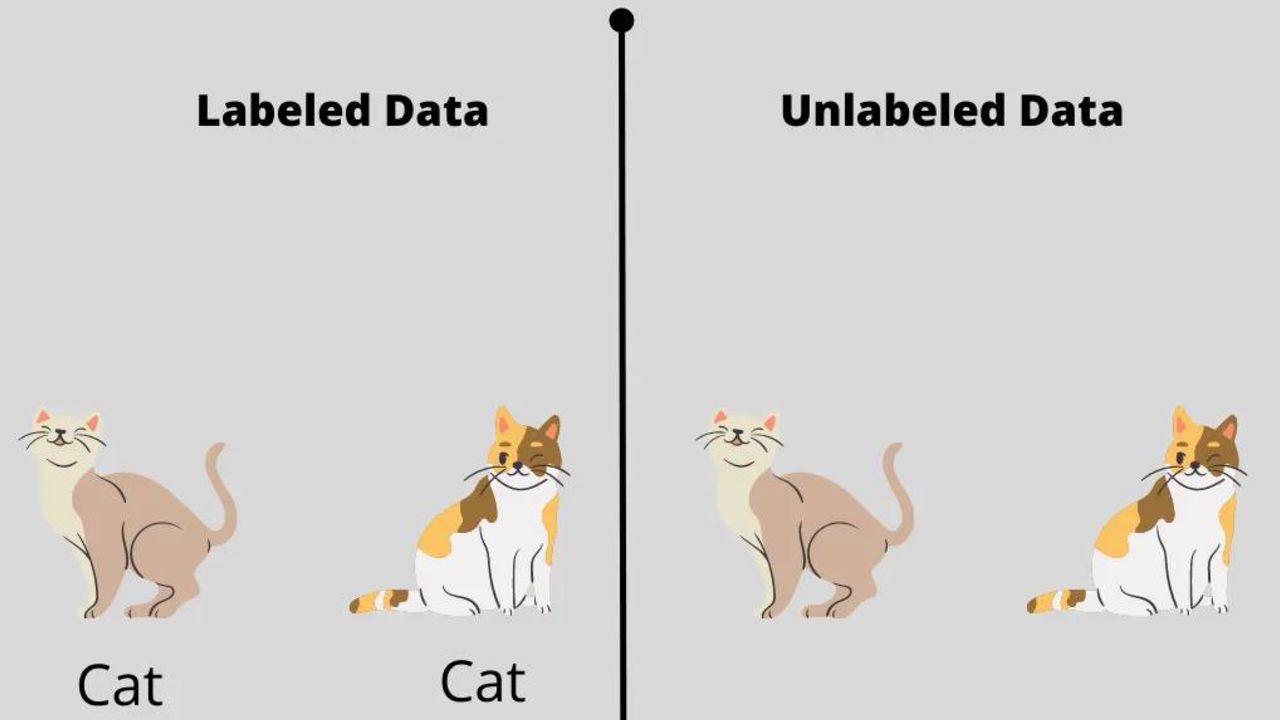Sentiment analysis, also known as opinion mining, is the process of identifying, extracting, and quantifying the sentiment or emotional tone expressed in a piece of text.
This process is widely used to analyze social media posts, customer reviews, and political conversations.
It can help businesses and organizations understand customer satisfaction, monitor brand reputation, and identify emerging trends.
This blog post will provide an overview of the techniques used in sentiment analysis, explore its applications in various fields, discuss the challenges it faces, and consider its future prospects.
Techniques Used in Sentiment Analysis
Sentiment analysis involves the use of various techniques to analyze text data.
The most common techniques used are rule-based, machine learning, and hybrid techniques.
1. Rule-Based Techniques
Rule-based techniques rely on a set of pre-defined rules to analyze text data.
These rules are created based on linguistic and semantic knowledge of the language used in the text.
The analysis process involves assigning scores to words and phrases based on their semantic orientation (positive, negative, or neutral).
The scores are then used to determine the overall sentiment of the text.
Advantages of Rule-Based Techniques:
- Rule-based techniques are easy to implement and interpret.
- They can be customized to specific domains or languages.
- They do not require large amounts of training data.
Limitations of Rule-based Techniques:
- Rule-based techniques rely on pre-defined rules, which may not capture the nuances of language or context.
- They cannot handle sarcasm or irony in text.
- They do not adapt well to new words or phrases.

Read: The Benefits and Drawbacks of Using Chatbots for Customer Service
2. Machine Learning Techniques
Machine learning techniques involve training a model to classify text data into positive, negative, or neutral categories.
The model is trained using a large dataset of labelled text data.
This labelled data teaches the model to recognize sentiment in text.
The model then classifies new, unlabelled data based on learned patterns.
Advantages of Machine Learning Techniques:
- Machine learning techniques can handle complex language and context.
- They can adapt to new words and phrases.
- They can handle sarcasm and irony in text.
Limitations of Machine Learning Techniques:
- Machine learning techniques require large amounts of labelled data for training.
- They can be difficult to interpret.
- They may not generalize well to new domains or languages.
3. Hybrid Techniques
Hybrid techniques combine both rule-based and machine learning techniques to improve the accuracy of sentiment analysis.
These techniques use rule-based approaches to pre-process text data and machine learning approaches to classify the sentiment of the text.
This approach combines the strengths of both techniques and minimizes their weaknesses.
Advantages of Hybrid Techniques:
- Hybrid techniques provide higher accuracy than rule-based or machine learning techniques alone.
- They can handle complex language and context.
- They can adapt to new words and phrases.
Limitations of Hybrid Techniques:
- Hybrid techniques require a combination of pre-defined rules and labelled data for training.
- They can be difficult to implement and interpret.
Read: The Impact of Social Media on Customer Service
Applications of Sentiment Analysis
It has various applications in different fields, including social media, e-commerce, and politics.
1. Social Media
Social media platforms generate massive data for analyzing public opinion, customer satisfaction, and brand reputation.
One can use sentiment analysis to monitor brand reputation, analyze consumer feedback, and measure customer satisfaction.
2. Monitoring Brand Reputation
Social media sentiment analysis can help businesses monitor their brand reputation by tracking what customers are saying about their brand online.
By analyzing the sentiment of social media posts and comments, businesses can identify negative feedback and take corrective actions to address customer complaints.
3. Analyzing Consumer Feedback
Social media sentiment analysis can analyze consumer feedback about products and services.
By analyzing customer comments and reviews, businesses can identify needed improvements and emerging trends.
4. Measuring Customer Satisfaction
You can use social media sentiment analysis to measure customer satisfaction by analyzing customer feedback.
This helps businesses understand customer feelings about products and services and identify areas for improvement.
5. E-commerce
Sentiment analysis is also useful in the e-commerce industry.
It allows you to analyze customer reviews and product feedback to gain insights into customer preferences. This helps to identify areas for product improvement and spot market trends.
Put Your Tech Company on the Map!
Get featured on Nicholas Idoko’s Blog for just $50. Showcase your business, boost credibility, and reach a growing audience eager for tech solutions.
Publish Now6. Customer Reviews Analysis
E-commerce companies rely on customer reviews to help customers make purchasing decisions.
Sentiment analysis can help businesses understand the sentiment expressed in customer reviews and identify areas where products need improvement.
By analyzing customer reviews, businesses can also identify features that customers like and dislike about a product and use this information to make improvements.
7. Product Feedback Analysis
You can also use sentiment analysis to analyze product feedback from customers.
By analyzing feedback, businesses can identify common complaints or issues with products and take corrective actions to improve customer satisfaction.
8. Identifying Trends
E-commerce companies can use sentiment analysis to identify emerging trends in the market.
It allows businesses to analyze customer feedback to identify new product interests and create or modify products.
9. Politics
In politics, businesses use it to analyze public opinion, measure campaign effectiveness, and monitor political conversations.
10. Analyzing Public Opinion
It can be used to analyze public opinion about political candidates, issues, and policies.
By analyzing social media posts and other online content, political campaigns can understand how the public feels about their message and take corrective actions to improve their campaign strategy.
11. Measuring Campaign Effectiveness
You can use sentiment analysis to measure the effectiveness of political campaigns
It allows you to analyze public opinion before and after events to understand message reception and adjust strategy.
12. Monitoring Political Conversations
Sentiment analysis can be used to monitor political conversations on social media and other online platforms.
This can help campaigns understand how their message is being received by the public and identify emerging issues that need to be addressed.
Read: How to Use Technology to Improve Customer Service
Challenges in Sentiment Analysis
While sentiment analysis has many benefits, there are also some challenges that need to be addressed.
Some of the major challenges include contextual analysis, irony and sarcasm, subjectivity and bias, and multilingualism.
1. Contextual Analysis
Contextual analysis is one of the major challenges.
The meaning of a word or phrase can change based on its context, and sentiment analysis algorithms need to be able to understand the context in which words and phrases are used to accurately classify sentiment.
2. Irony and Sarcasm
Irony and sarcasm are often used in social media posts and other online content, and sentiment analysis algorithms need to be able to identify when these are being used.
This can be challenging because the sentiment expressed in ironic or sarcastic content is often the opposite of the literal meaning of the words used.
3. Subjectivity and Bias
Sentiment analysis algorithms can be biased towards certain sentiments or subjectivity based on the data used to train them.
This can lead to inaccuracies in results, particularly in cases where the sentiment is more subjective.
4. Multilingualism
Sentiment analysis is more challenging in multilingual contexts because different languages have different structures and nuances.
Sentiment analysis algorithms need to be able to accurately classify sentiment in multiple languages to be effective in these contexts.
Put Your Tech Company on the Map!
Get featured on Nicholas Idoko’s Blog for just $50. Showcase your business, boost credibility, and reach a growing audience eager for tech solutions.
Publish Now
Read: The Evolution of Customer Service: From Call Centers to Chatbots
Future of Sentiment Analysis
Sentiment analysis is an evolving field, and there are many exciting developments on the horizon.
Some of the key areas of development include advancements in natural language processing (NLP), personalization, and real-time analysis.
Advancements in NLP
Advancements in NLP technology are making it easier for sentiment analysis algorithms to understand complex language and context.
As NLP technology continues to evolve, the algorithms are likely to become more accurate and effective in analyzing sentiment.
Personalization
By analyzing individual preferences and behaviour, sentiment analysis algorithms can provide personalized recommendations and experiences to users.
This can help businesses improve customer satisfaction and engagement.
Real-Time Analysis
With the increasing use of social media and other real-time communication channels, businesses, and organizations need to be able to monitor sentiment in real-time to respond quickly to emerging issues and trends.
Conclusion
Sentiment analysis is a powerful tool for businesses and organizations to understand customer feedback, monitor public opinion, and make data-driven decisions.
As the field of sentiment analysis continues to evolve, businesses and organizations can expect to see even more benefits in the future.
Before you go…
Hey, thank you for reading this blog to the end. I hope it was helpful. Let me tell you a little bit about Nicholas Idoko Technologies.
We help businesses and companies build an online presence by developing web, mobile, desktop, and blockchain applications.
We also help aspiring software developers and programmers learn the skills they need to have a successful career.
Take your first step to becoming a programming boss by joining our Learn To Code academy today!
Be sure to contact us if you need more information or have any questions! We are readily available.
[E-Books for Sale]
1,500 AI Applications for Next-Level Growth: Unleash the Potential for Wealth and Innovation
$5.38 • 1,500 AI Applications • 228 pages
Are you ready to tap into the power of Artificial Intelligence without the tech jargon and endless guesswork? This definitive e-book unlocks 1,500 real-world AI strategies that can help you.
See All 1,500 AI Applications of this E-Book
750 Lucrative Business Ideas: Your Ultimate Guide to Thriving in the U.S. Market
$49 • 750 Business Ideas • 109 pages
Unlock 750 profitable business ideas to transform your future. Discover the ultimate guide for aspiring entrepreneurs today!
See All 750 Business Ideas of this E-Book
500 Cutting-Edge Tech Startup Ideas for 2024 & 2025: Innovate, Create, Dominate
$19.99 • 500 Tech Startup Ideas • 62 pages
You will get inspired with 500 innovative tech startup ideas for 2024 and 2025, complete with concise descriptions to help you kickstart your entrepreneurial journey in AI, Blockchain, IoT, Fintech, and AR/VR.
We Design & Develop Websites, Android & iOS Apps
Looking to transform your digital presence? We specialize in creating stunning websites and powerful mobile apps for Android and iOS. Let us bring your vision to life with innovative, tailored solutions!
Get Started Today



